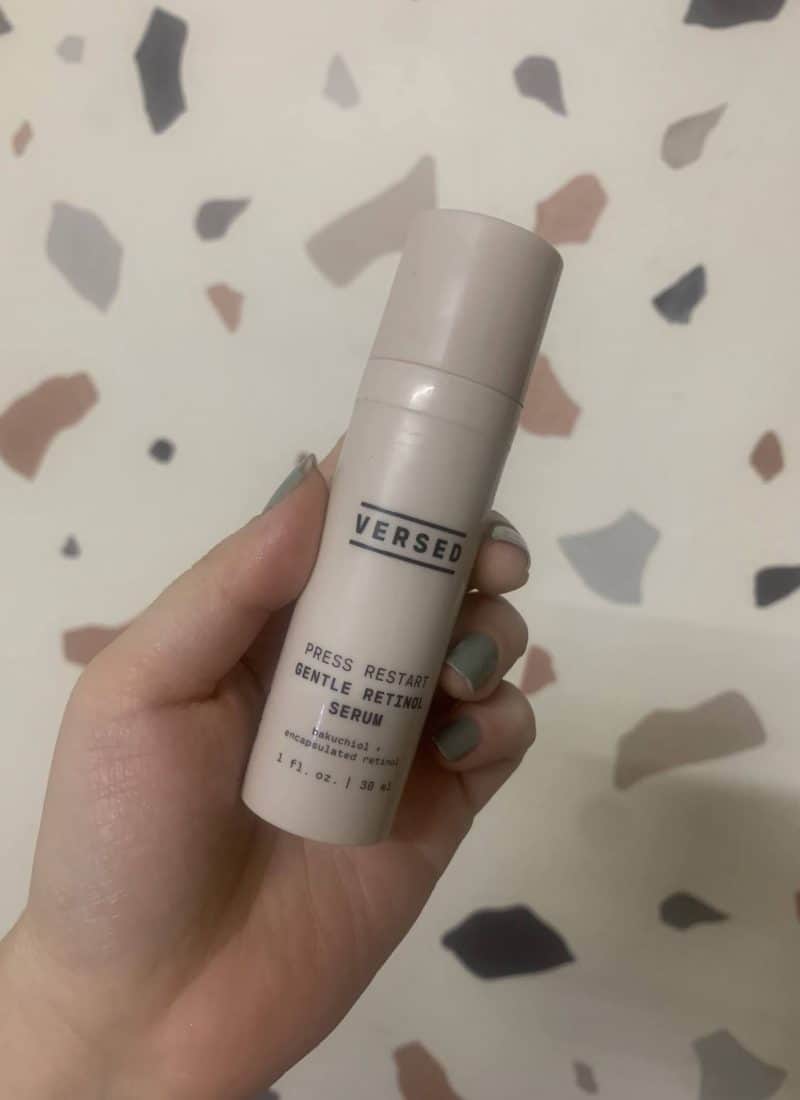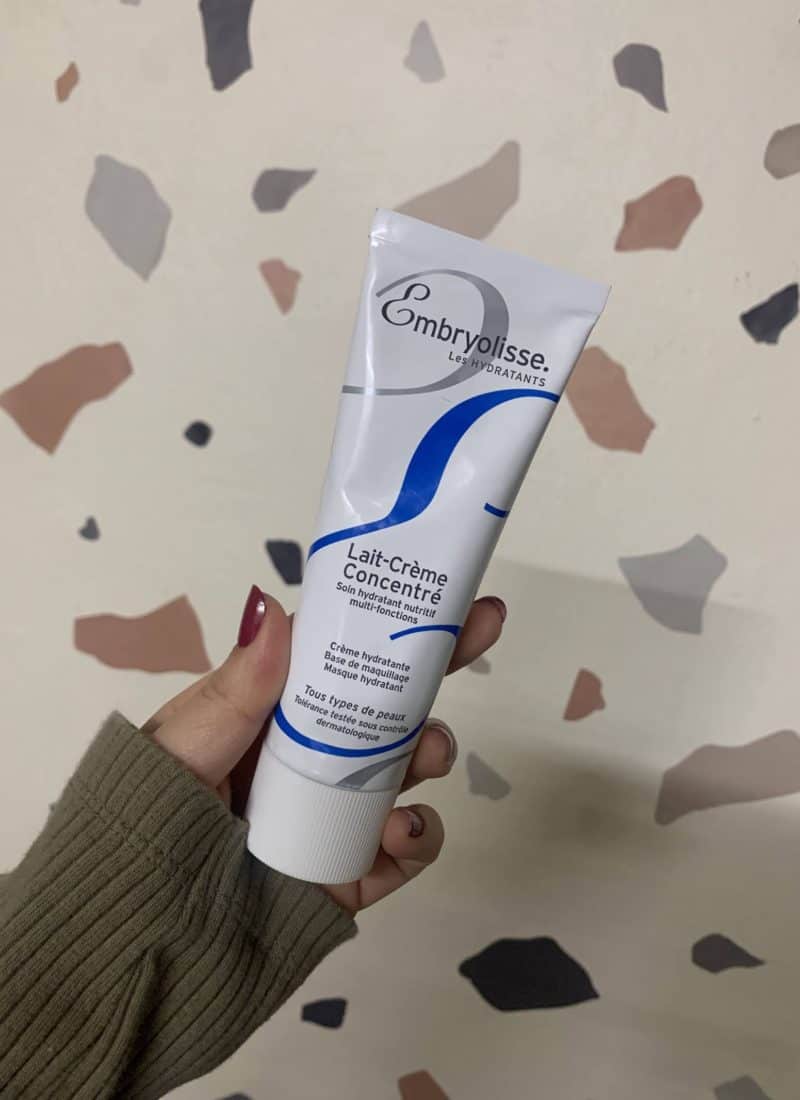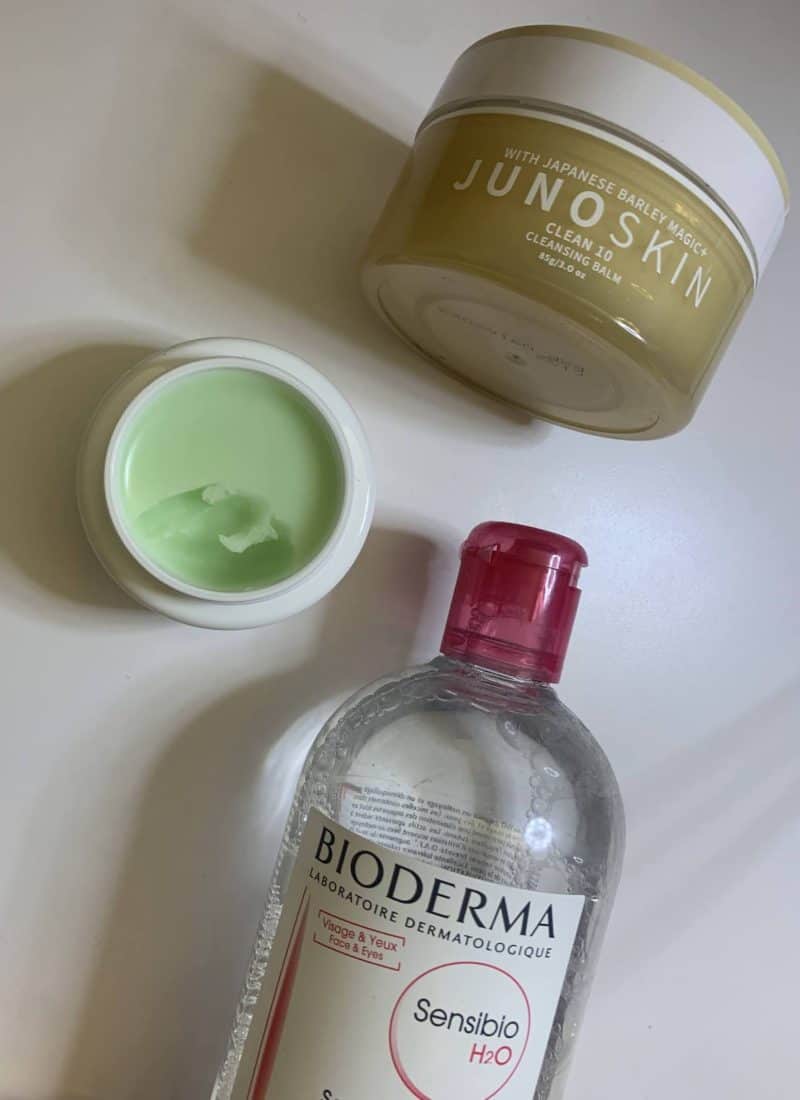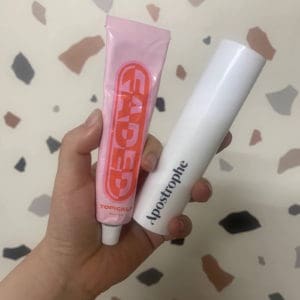If you’re looking for an ingredient to treat hyperpigmentation, vitamin c often comes highly recommended. It’s popular for a reason – it’s a great antioxidant and can help with improving collagen production and uneven skin tone. However, did you know that there are many different kinds of vitamin c? Skincare technology is constantly improving and new forms of vitamin c are growing in popularity! To start out, let’s talk about why this ingredient may be worth adding to your routine:
What is Vitamin C?
Vitamin c is an extremely popular skin care ingredient – and for good reason! As mentioned earlier, it’s a potent antioxidant that can help with uneven skin tone, hyperpigmentation, and collagen production. If you’re looking for that natural glow, vitamin c can help give you that extra brightness! As an antioxidant, it helps to protect your skin from environmental aggressors like pollution and free radicals. I typically recommend using vitamin c in the morning because of its antioxidant protection. It isn’t a necessity in a routine but can be a great addition if you’re looking to treat hyperpigmentation and brighten the skin. I personally use vitamin c and retinoids as my two main “active” ingredients in my skincare regimen.
The Different Kinds of Vitamin C
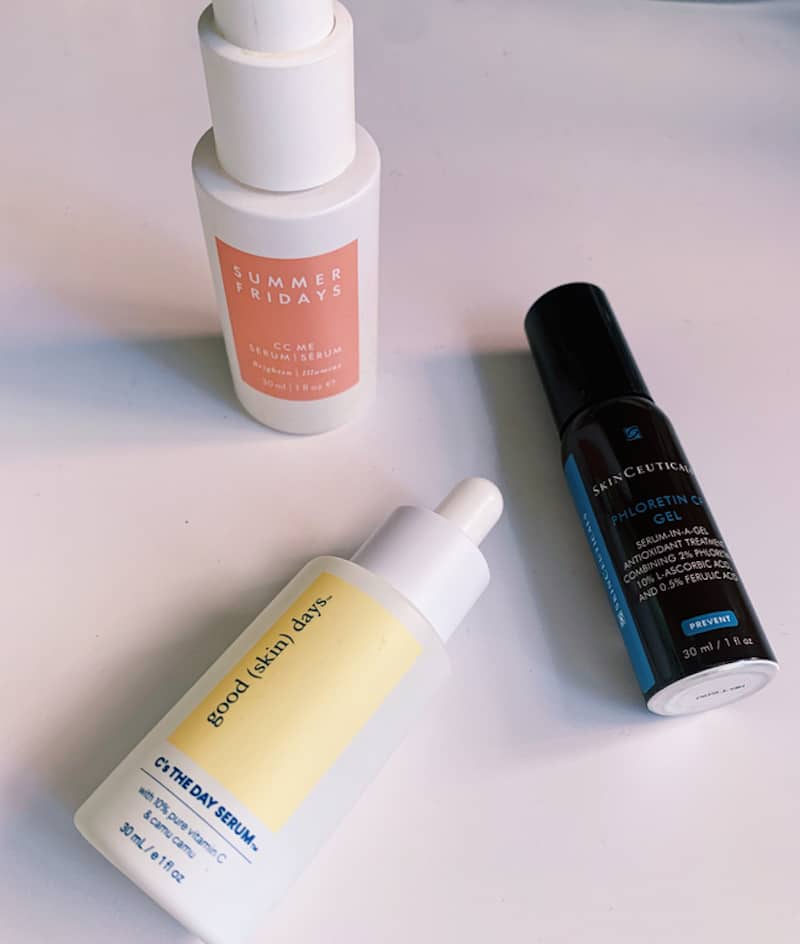
The most commonly used ingredient is L-Ascorbic Acid, but it’s notoriously known to be difficult to stabilize. The use of different derivatives has grown in popularity in recent years since these tend to be gentler and more stable to formulate with. Let’s break down the most common vitamin c ingredients:
L-Ascorbic Acid
As I talked about earlier, the most well-researched form of vitamin c is L-Ascorbic Acid, the chemically active form. L-Ascorbic Acid has been proven to help improve collagen production, treat hyperpigmentation, and act as a potent antioxidant. You can find L-AA in some of the most popular serums on the market, including the coveted Skinceuticals C E Ferulic Serum ($169).
The problem that arises with L-Ascorbic Acid is that it is difficult to stabilize (making it oxidize/turn brown more quickly). Many brands, like Skinceuticals, formulate L-Ascorbic Acid with ferulic acid and vitamin e to help stabilize the molecule. I personally love L-Ascorbic Acid serums and have found them to be the most effective on my skin, but the ingredient’s instability can make it irritating for some. Other vitamin c derivatives tend to be more stable and less irritating, but aren’t as well-studied as L-Ascorbic Acid – but that doesn’t mean they can’t be effective!
Products with L-Ascorbic Acid:
Skinceuticals C E Ferulic Serum
Drmtlgy Advanced C E Ferulic Serum – I personally use and love this one!
BeautyStat Universal C Skin Refiner
Tetrahexyldecyl Ascorbate
This vitamin c derivative has been growing in popularity! I’ve seen it used more frequently in new launches and for good reason. Tetrahexyldecyl Ascorbate is an oil-soluble form of vitamin c that is very gentle on the skin. You can find this ingredient in oil-based serums like the Wabi Sabi Botanicals Light Reveal. Tetrahexyldecyl Ascorbate is generally more gentle on the skin compared to L-Ascorbic Acid and has some promising studies on effectiveness. It’s not as well studied as L-AA, but it’s a great gentle option, especially for more sensitive skin.
Products with Tetrahexydecyl Ascorbate:
InnBeauty Project Green Machine Serum
3-O Ethyl Ascorbic Acid
This vitamin c derivative has been the star ingredient in many newer releases including Summer Fridays CC Me Serum and the Youth to the People Clean Caffeine Energy Serum. 3-O Ethyl Ascorbic Acid is also a stable derivative that is both oil and water-soluble. Most of the studies that have been done on 3-O Ethyl Ascorbic Acid are on its antioxidant and anti-inflammatory properties. If you’re looking for a place to start, this derivative is a great option! However, it’s important to note that there are minimal studies on its efficacy to treat hyperpigmentation and photo-aging.
Products with 3-O Ethyl Ascorbic Acid
Hyper Skin Brightening Clearing Vitamin C Serum
Youth to the People Clean Caffeine Energy Serum
Ascorbyl Glucoside
A kind of vitamin c that is paired with glucose. It’s known to be very stable and can penetrate the skin. However, there isn’t much evidence to show its ability to become L-Ascorbic Acid. This means that it may not convert into a form of vitamin c that can be effectively used by the skin. Because of this, it’s hard to know if it will really benefit the skin. I could see Ascorbyl Glucoside being a nice complement to other active ingredients like niacinamide, but it wouldn’t be my first choice.
Products with Ascorbyl Glucoside:
The Ordinary Ascorbyl Glucoside 12%
Paula’s Choice Niacinamide 10% Booster
The Inkey List 15% Vitamin C + EGF Serum
Magnesium Ascorbyl Phosphate
A commonly used vitamin c derivative that is stable and water-soluble. While Magnesium Ascorbyl Phosphate is more stable, it doesn’t have great evidence to support its ability to absorb into the skin. If you’re just looking for an ingredient to brighten the skin, this could be a good choice. However, it hasn’t been shown to be the most effective for treating hyperpigmentation. Magnesium Ascorbyl Phosphate is not the worst derivative, but I think there are better options out there!
Products with Magnesium Ascorbyl Phosphate:
The Ordinary Magnesium Ascorbyl Phosphate 10%
Sodium Ascorbyl Phosphate
This form of vitamin c is a popular alternative to L-Ascorbic Acid, and for good reason! Did you know? Some studies show that Sodium Ascorbyl Phosphate can help reduce acne-causing bacteria. It’s a very stable, water-soluble derivative that’s a great option for acne-prone and sensitive skin. If you’re looking for a promising alternative to L-Ascorbic Acid, this would be my pick! Studies have shown that it is a more potent antioxidant than Magnesium Ascorbyl Phosphate. It may not be as effective as L-AA for treating hyperpigmentation, but it’s a great option if your skin can’t tolerate it.
Products with Sodium Ascorbyl Phosphate:
Overall, L-Ascorbic Acid is the tried and true, and for good reason! If you’re looking for a well-studied, proven ingredient to treat hyperpigmentation, L-AA is your match. However, there are a few promising derivatives like Sodium Ascorbyl Phosphate and Tetrahexyldecyl Ascorbate. These would be great options to try out if your skin can’t tolerate L-AA.
You shouldn’t render the other types of vitamin c shouldn’t be useless though. Oftentimes, these derivatives are paired with skin brighteners like kojic acid and tranexamic acid. The combination of ingredients can help with treating hyperpigmentation! Remember, what’s most important is the formulation – not the individual ingredients. I personally find L-Ascorbic Acid the most effective on my skin, but there are lots of great products out there!
Certain product links are affiliate links. I do earn a small commission if you purchase from these links (with no additional cost to you), which supports me and my blog. Feel free to check out all of my affiliate/referral links or shop my favorites if you decide to shop. Thank you for your support!
